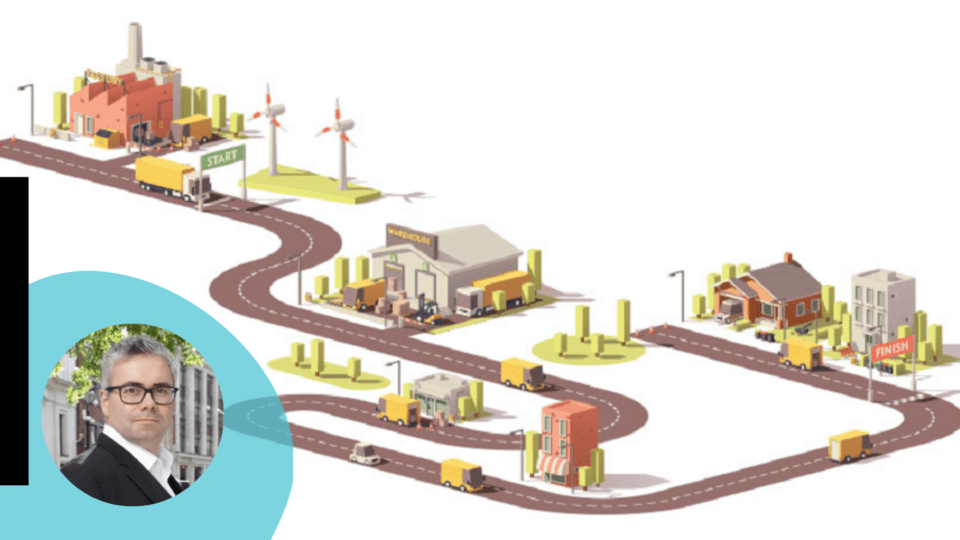We quite often read that “Company ABC” is looking to pull out of China, or “Company XYZ” is moving production in response to cost, availability and environmental concerns. The reality is that there are not many companies in the world today that aren’t, in some way, shape or form, undertaking an end-to-end review of their supply chains.
Whether it’s fixing or future-proofing, a succession of supply chain shocks has highlighted many vulnerabilities that may have gone under the radar if they had happened in isolation. This is prompting executives to reassess their relationship with risk. Then layer on regulation, incentivization and ethical concerns, leaving the rationale for review obvious. Times are changing, so must supply chains.
So why aren’t we seeing even more change happening? Well, the two big problems to fixing things are 1) what to do and 2) how to pay for it. And the second is less obvious.
On the ground, the trend of moving away from China is real, although perhaps not yet at the pace one might expect given the noise surrounding the subject. But that’s likely because it’s not a simple decision. There are multiple factors at play; not least is the fact that China is the manufacturing hub of the world, and as such has built effective infrastructure, workforces and supply chains to win work, not lose it.
Moving is hard, in large part because there are not that many options for where to move to at scale. Whilst other “low-cost” countries, particularly in Asia, have been the short-term beneficiaries of the exodus, the ability to scale quickly elsewhere and make a strong business case of doing so holds executives back from moving en masse. China still dominates the markets that it has always dominated.
But what of automation? Can’t you automate your way out of China? A lot of what we buy from China is produced at a low cost and low margin, which means automation is not the slam dunk business case that it may be in other sectors or geographies. And in any event, try getting an automation project off the ground any time soon.
Consequently, since short-term lift and shifts don’t work for the majority, and because China still offers lots of advantages, many businesses are taking the opportunity to think more strategically about future supply chains. This strategy usually prioritizes some form of extra resilience, to balance the risk of remaining as is with the risk of making the wrong move now.
Taking an example that has been in the news recently, we read a lot about Apple pulling out of China following moves to onshore and subcontract in India. But can Apple leave China? And does it even want to? Certainly it appears that the U.S. government wants it to as a flagship brand and symbol of U.S. tech innovation. The situation is super complex.
Apple employs approximately 15,000 people in China directly, but the supply chains built up around “Apple City” employ around 1.5 million. This would make the Apple supply chain a top 350 global city. The work that these people do is concentrated on labor-intensive activities, and skills have been built up over nearly a quarter of a century. You don’t turn that off overnight. But equally, there are other growth markets to invest in.
Many fashion brands and retailers have come into the spotlight for moving production into locations such as Vietnam, Cambodia, Bangladesh and, notably, Turkey in Europe. A lot of these retailers have been looking to reduce uncertainty by getting closer to customers, either by producing or storing and distributing closer to local markets. But again, in a low-margin, fast-moving sector and with shipping costs stabilizing, they are subservient to higher operating costs in the stable markets that have the capacity to scale. For these reasons, we see a gradual shift rather than a wholesale exodus.
Post-pandemic, pure cost may no longer be enough to prompt a move, although the opportunity cost of disruption made a more compelling case for a while. But as executives think more about risk and growth, other factors come into play, such as carbon footprints, supply chain transparency, diversity and human rights. Progress on these will look good to the socially conscious consumer, but it also positions the business well in the face of expected legislation, access to finance and talent attraction.
From a risk-adjusted buying perspective, buyers are looking for suppliers and locations that offer 1) a pre-existing skill base that lowers cost of change, 2) proximity to key markets, 3) good trading relationships with raw materials locations, 4) a cost model that works and keeps cost competitive and 5) a low environmental, social and political risk propensity.
Finally, we often make decisions based on past evidence assembled. In the future, domestic growth in China and India for many goods could soon go exponential. That makes them very attractive growth markets for western businesses, but it also means that there will be even greater pressure on raw materials and global production systems. Perhaps it will be advantageous to build bridges locally and invest in local communities. This all adds layers of complexity to an already complex landscape.
Times are changing and so must supply chains.
As EVP at Proxima, Simon Geale is responsible for products, solutions and marketing. He views his role as understanding the challenges that current and prospective clients face and then calibrating Proxima solutions to solve them. Geale creates opportunities for presenting Proxima in different markets, showcasing what they do and how they discuss it. He also serves as a regular writer and speaker on all things procurement, digital and change orientated. He’s spent over a decade working in solutions, designing hundreds of commercial programs across a variety of sectors and multiple geographies. His network spans hundreds of suppliers, business leaders and procurement professionals.




